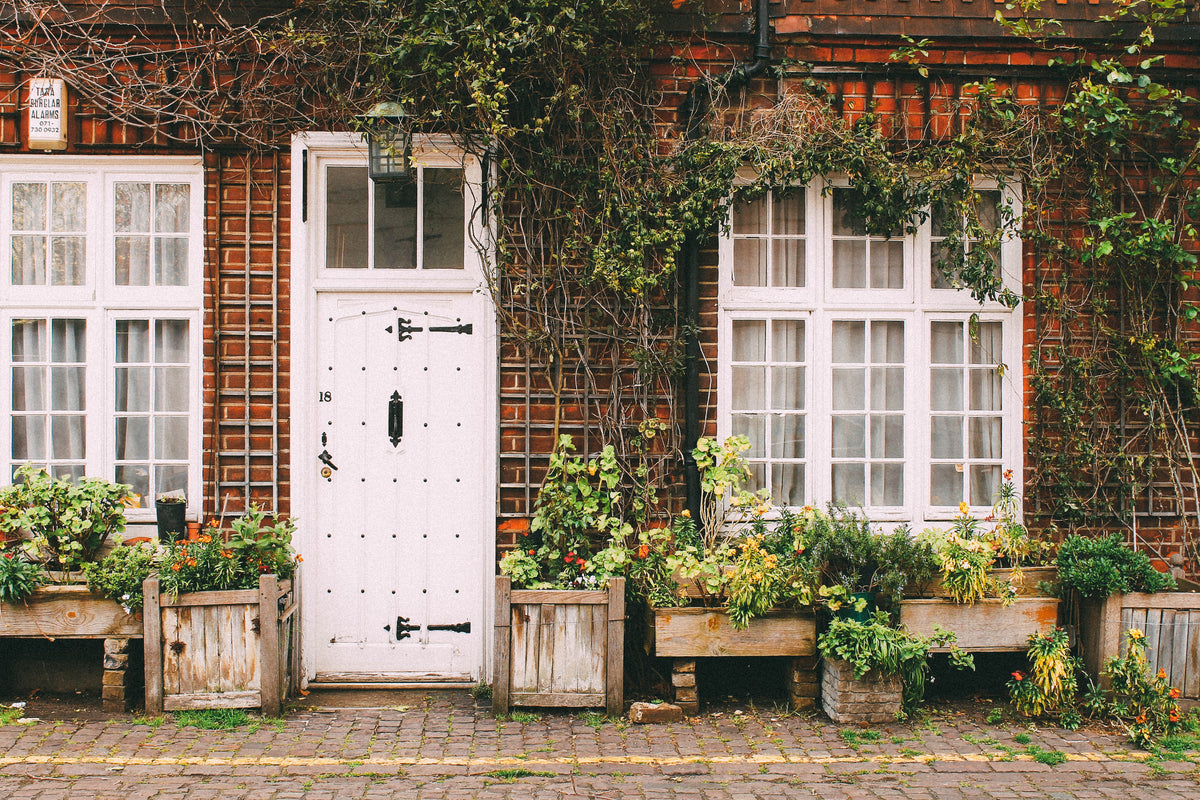Small Space Garden Design

At Nutley’s, we believe that the size of your green space (or lack thereof) should never get in the way of your botanical vision.
Whether you own a small patio, a balcony, or a modest front garden, this blog will provide ideas on how to spruce it up and prepare for the year ahead.
Balconies

When it comes to transforming your sparse balcony into a thriving garden, it is important to consider the elements. The sun, heat, wind and the cold could all have an impact on the success rate of your plants. This is where researching and planning ahead will come in handy. Contemplate how your vision fits with the practicalities of what your plants require when it comes to light, food and water.
Balconies tend to be rather shady spots, so opt for vegetables which can still grow despite limited sunlight such as rocket, broccoli, carrots and cauliflower. There are plenty of plants which are prime for your sheltered miniature garden, including succulents, snowdrops, winter aconites and bellflowers
As you plan to set your vegetable seeds up in boxes, make note of the distance required between each plant so that each seedling has its chance to thrive without overcrowding.
Why not start small with a self watering windowsill gravel tray or hanging wall pot with a few low maintenance plants to build up your confidence?
Entryway/ Patio
If you have been thinking about creating an oasis on your front or backstep, selecting just a few eye catching features will allow your space to become both calm and manageable.
The walls are a wonderful place to start. Consider building a trellis or selecting some hanging plants to maximise your growing space and to pique interest in your garden.
Make sure you take into account the material of your trellis and what weight it can withstand before choosing a climber to decorate it with. Perennial climbers tend to weigh more than annual climbers and so will require a more sturdy structure.

Whilst you might be tempted to include as much variety as possible, it is well worth contemplating just 2 to 3 different types of plants which you can tend to well and learn from.
By mixing different types of pots and choosing various heights, you can create an enchanting spot without complicating your garden routine.
Windows

Your windows are a fantastic spot to build a miniature garden - on both the outside and on the inside. Window sills can provide both shelter from harsh weather conditions and enough sunlight to produce an array of herbs, handy for any of your cooking ventures. Take a look at our metal and zinc pots for a stylish pot to place your plants in.
To adorn the outside of your house, fixed window boxes can be an easy way of adding instant curb-appeal . If you would prefer a more personalised box, you can create your own from either recycled materials or by purchasing the essentials at your local DIY store. Take a look at our seed grow kits for a bright selection of flowers to get you started.
Alternative garden features
If you have resolved to make better use of second hand items, why not give your belongings a new lease of life in the garden?

An outgrown pair of wellies could make the perfect home for your flowers and is guaranteed to give a rustic feel. Give your old boots a scrub and drill some holes in the bottom of the boots to allow for water drainage.
Rather than throwing away your old bike, give it a makeover by fixing a basket to the front and planting some bright flowers and hanging plants for a vintage look.

Turn your old tyres into a quirky plant pot. Why not brighten up your space by painting the tyre either a bright colour such as royal blue or go for a calming muted shade to match the mood of your garden. Both shrubs and perennials will work well here, but make sure you’re certain of the placement of your tyre, as it will be difficult to move once filled.
Inspired by the TV show ‘Escape to the Chateau’, reusing tea pots and tea cups has become a trendy way to feed the birds. Simply glue a cup and saucer together and hang from a secure branch or fix to a wall to create a fine-dining experience for the local wildlife.
We hope this is enough to get you started on designing your own green space. If you have any ideas on this topic or if you’d like to let us know how you got on with any of the suggestions above, we’d love to hear from you. Simply leave a comment in the box below.